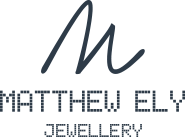A Guide to Buying Pearls
If there was an “it” gem this year, it would have to be pearls.
From runway fashion to red carpet events, these iridescent beauties have come along way from their “Breakfast at Tiffany's” days.
Of course, there are pearls and there are pearls. So what makes one ‘better’ than another one? And how can you tell the difference?
Scroll down for an introduction to the Autore South Sea Cultured Pearl Classification Guide, alongside a few personal tips from Matthew Ely.

Autore South Sea Cultured Pearl Classification Guide
Each pearl at Matthew Ely Jewellery is judged and valued according to Autore’s South Sea Cultured Pearl Classification Guide. This is based on the five Autore S’s – Shine, Surface, Shape, Shade and Size.





MORE ABOUT PEARLS:
A Pearl Renaissance: Top 5 Trends
Gemstone Spotlight: Keshi Pearls

























